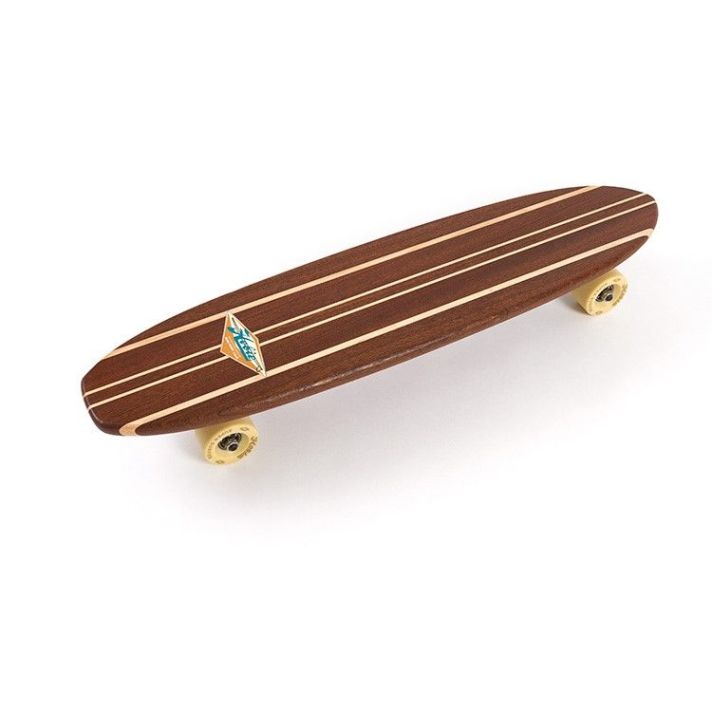“STAY CLOSE TO THE SOUL”
A CALL TO ACTION
SURFING HERITAGE AND CULTURE CENTER
TEMPLES OF STOKE EXHIBIT CLOSING
By
Andrew Cowell
Surfing has seen many changes, some extreme and dynamic, like the Shortboard Revolution, or Simon Anderson’s Thruster, or the reemergence of the longboard. Other developments have been understated and hairsplitting, almost incomprehensible. It’s here, I believe, we find the evolution of the “surf shop.” The revolution has been subtle. There’s little dispute that Dale Velzy opened the first shop in 1949; little more than a dimly lit, dilapidated, one room store front in Manhattan Beach, California. Jack O’Neill upped Velzy’s ante in 1952 with the opening of the “SURF SHOP” on San Francisco’s Great Highway. (It’s interesting to note that Jack was the first to use the moniker “surf shop.”) Hobie was nipping at O’Neill’s heals, opening the first dedicated, purpose-built surf shop at Dana Point, California in 1954. By ’61 beach communities were littered with them. Peterson’s Surfing Yearbook of 1963 notes that there were 41 in Southern California alone.
For these early adventure seeking, passionate, inventive, nonconformist surfing entrepreneurs the haunting speculation of turning a profit weighed heavily, often consuming more time and energy than their surfing did. Relying on the sale of surfboards just didn’t pay the bills. Some, like O’Neill, with his life-long passion for discovery and innovation, saw a great opportunity in living and surfing in such harsh conditions. He foresaw the creation of the wetsuit and how it would provide for him and his family the freedom to build a life around surfing. We are all indebted to Jack O’Neill for keeping us warm and surfing longer. Others saw the need for accessories: wetsuits, wax, car racks, rentals, and lessons. Still others, like Hobie Alter, set their sights on adventure and tropical isles, developing catamarans and other ocean and wave friendly craft.
Then in the 1970’s three enterprising Australians: Alan Green, Carol McDonald, and Tim Davis, and later a fourth, John Law formed the Rip Curl Wetsuit Company, from which Quiksilver apparel was later spawned. Right out of the box, they saw success with a boardshort design that was leaps and bounds ahead of anything the surf shop owner and customer had seen or worn. These shorts were maneuverable, manageable, and comfortable making them brand leading exponents. These four, along with Americans Jeff Hakman and Bob McKnight saw the writing on the wall. The coming revolution gained a foothold, apparel would be king, while the surfboard, that on which the industry was built became second fiddle.
Still the focus for most of the tanned, motley crew of surfing misfits was the surf shop. With the mass acceptance of the Quiksilver boardshort, others jumped into the fray. As the surf/beach lifestyle was trending across middle-America, Billabong, Gotcha, Instinct and a Waimea sized wave of others swept over the market place. For a while the ride was great. Everyone, industry leaders and consumers alike were goovin’ on surfing and getting barreled.
Today many of the apparel manufactures have gone through a restructuring and the surf shop is seeing a more balanced approach to their offerings. Surf shops that stay close to the soul of surfing are a true celebration of the lifestyle, where the unknown creatives who happily toil in dimly lit rooms creating the agents we so enjoy riding waves on thrive. These Temples of Stoke have always been hallowed ground; a house of community, a bullpen were the generosity of spirit – aloha – is spread from one corner of the surfing world to another. A surfing life is a deeply rewarding and meaningful existence.
As the twenty-first century plods along, the race for your dollar has become increasingly competitive. Everything from wax to surfboards is offered for your shopping convenience online. I’m not knocking e-commerce, here at Hobie Surf Shop we offer you that accommodation for shopping our inventory, but today’s surf shop, much like yesteryear, are independently owned by surfers working to make a living by creating handmade surfboards and offering the goods and services needed to enjoy the surfing life. All the while employing many people smitten with the surfing bug. Unfortunately the internet forces many of these enterprising entrepreneurs to close their doors. Your support is needed.
Journalist Craig Stecyk has said that the surf shop “functions as the sport’s information centers, supply depots, halfway houses, classrooms, libraries, churches, banks, and museums.” Although Stecyk spoke thus in 1996, his view is still true today. Here’s the point: the surf shop functions as a societal glue. Support your local shop, and the next time you’re hunting waves, either in your community, or someone else’s, stop into the local shop. Buy a bar of wax, a tee shirt, or a hat. Chat up the kid behind the counter, the experience will be gratifying.
Lastly, check out the richly rewarding “TEMPLES of STOKE” exhibit that the Surfing Heritage and Culture Center (SHACC) is currently curating at http://www.shacc.org. It’s a guaranteed good time.








